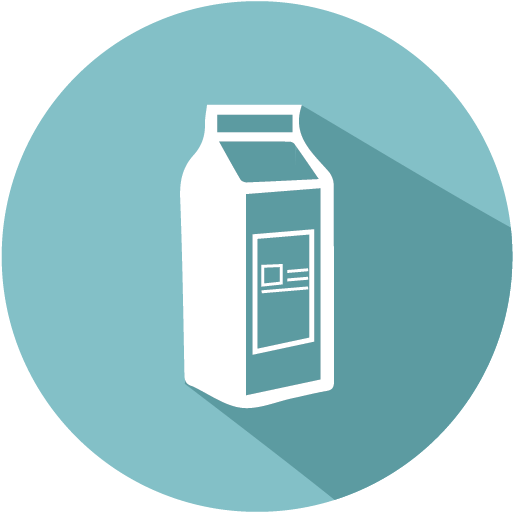Promote Healthy Food Choices Online? A Dietary conflict
Relevant topics Archive, Conversion
When ordering food online, the number of unhealthy food cues seems endless. Not only the food itself but also food-related words and pictorial representations stimulate unhealthy dietary behaviors. And that while eating-behavior-related disorders are only increasing in the western world. Therefore, governments started public health campaigns and educational programmes to promote healthier food choices. Nevertheless, with little success.
But why? Well, as an example, I definitely want to choose myself whether I want a healthy salad or a juicy burger. I do not want to be told explicitly what to eat and which greasy bite I should avoid. Exactly that explains why all these explicit approaches were not that effective in promoting healthy food choices. Hopefully, implicit nudging techniques have proven to be effective in changing food preferences. But do these nudges work in an online context as well?
Healthy-Top-Left Nudge also Works Online
Similar to offline contexts, when we buy food online, nudges can help us to make the right (or left) choice. Namely, we make healthier food choices when the healthy option is presented at the left.
A study was conducted where participants were presented with either menu 1 or menu 2 (Deek et al., 2022). Even though the items in both menus were similar, participants had a strong preference for menu 1. What superpower did menu 1 have? The healthy option is located to the left.

We have seen this bias before in our blog: How To Make People Prefer A Dry Salad Over A Tasty Cheeseburger. This left-side bias stems from our intuition. We like item placements on a horizontal line from left to right and from bottom to top. We categorize them. Just like we place small (left) to large (right) or light (left) and heavy (right) on this imaginary line, we connect the healthy options to the left side: resulting in a healthy left bias.
The researchers found that this healthy-top-left effect is especially present in restrained compared to unrestrained eaters. Also, it did not only work for main courses, but also desserts and even drinks! Why do especially restrained eaters stick to this healthy cue so much?
The Dieting Goal Conflict Theory: How Your Brain Follows the Healthy Cue
Especially for restrained eaters, a healthy cue can induce a goal conflict. Should you (a) admit to the hedonic goal of food enjoyment or (b) hold on to your dieting goal? Providing a healthy cue at this moment of doubt can activate your dieting goal, resulting in choosing the healthy option.
What Food Delivery Platforms Should do
This study shows how food cues and altering item placements can be effective in promoting healthier food choices. Many food delivery platforms use online ordering systems. Altering healthy-food cues and placement can therefore be an easy implementation and as healthy options are usually even more expensive, it might even give your sales a boost!
Take home points
- Explicit public health campaigns and educational programmes to promote healthier food choices have little effect
- Implicit nudging techniques have proven to be effective in changing food choice behavior
- The placement of items in a menu is important
- We make healthier food choices when the healthy option is presented at the top-left
- This healthy-top-left effect is especially present in restrained compared to unrestrained eaters, as it induces a Dieting Goal Conflict
- Food companies can easily implement this healthy nudge on their online food ordering platforms
Further Reading
-
A Label A Day Keeps The Doctor Away: Increasing Healthy Eating Via Innovative Packaging Information Labels
You may sometimes purposely forgo reading the front-of-package (FOP) labels on the packaging of food goods. The main reason could be to ignore the unhealthiness of the chosen option and let your tastebuds revel in its sugary glory. Other reasons include the difficulty to read and the misleading nature of the labels, leaving the consumer in a state of confusion. If the label is hard to understand, you won’t want to read it and you won’t make a healthy decision.
In this paper, the researchers focus on sugar content and evaluate a novel FOP label’s effectiveness on participants’ preference for the healthier option when presented with various food choices. This was achieved by proposing categories in terms of their simplicity: simple options with few ingredients (smoothies), mid-complexity options with a shortlist of ingredients (yoghurts), and complex options with many ingredients (ready meals). Along with increasing complexity, the sugar content also increases; the smoothie has less sugar than the yoghurt, which has less sugar than the ready meal.
These food options were proposed with the traffic light system or the sugar-spoon label, representing the number of teaspoons of sugar contained in the product. By comparing a standard traffic-light label system versus their invented sugar-spoon label, the researchers found that the participants’ choices were healthier when the product presented was of simple composition (vs complex composition) and adopted their sugar-spoon label (vs the traffic light label).
The study concluded that the sugar-spoon label is more effective at favoring the choice of low-sugar content food goods than the regular traffic light label.
What cognitive process allows for this healthier decision? Find out below.
-
Online Food Photos that Make Your Mouth Water: How Color-Saturated Food Images can Boost Sales
We've probably all been there before. We’re scrolling through our Instagram feed, just to stop and stare at a burger from a local restaurant that looks so good we instantly feel hungry. Maybe we can restrain at first, but a few days later we miraculously find ourselves craving a burger while not even thinking about that post anymore, and we are already planning on going there with a friend.
What is it that one photo on Instagram can unconsciously persuade us to go to a food outlet or order something online, while we have no difficulties neglecting another photo?
Working part time as a hospitality marketeer, I struggled with that question a lot of times. How can I make these photos so attractive that it gets people in the door?


